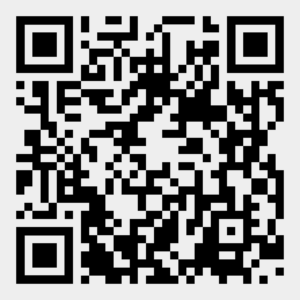Chemical Bonding — Molecular Geometry and Hybridization of Atomic Orbitals: Which Central Atom Makes a Polar Molecule?
You may choose to prevent this website from aggregating and analyzing the actions you take here. Doing so will protect your privacy, but will also prevent the owner from learning from your actions and creating a better experience for you and other users.
This opt out feature requires JavaScript.
Question
Molecule XF3 has a dipole moment. Is X boron or phosphorus?
Show/Hide Answer
X is phosphorus.
Refer to Section 5.1.4: Molecular Polarity and Dipole Moment (1).
Strategy Map
Do you need a little help to get started?
Check out the strategy map.
Show/Hide Strategy Map
| Strategy Map Steps |
|---|
| 1. Add up the valence electrons for each molecule (BF3 and PF3). |
| 2. Using B and P as central atoms, draw the Lewis Structure for each molecule.
Recall your steps for drawing Lewis Structures. Show/Hide ResourceRefer to Section 4.4 Lewis Symbols and Structures (2). Show/Hide Hint
|
3. Evaluate bond dipole moments and determine the shape of each molecule.
Show/Hide HintDifferences in electronegativities between atoms will cause a bond to be polar. Lone pairs on the central atom influence molecular shape. When looking at the shape of a molecule:
|
4. Identify any differences between the 2 molecules that could cause 1 to be polar.
Show/Hide HintWhich molecule has a lone pair on the central atom? What are the shapes of the 2 molecules? |
Solution
Do you want to see the steps to reach the answer?
Check out this solution.
Show/Hide Solution
Boron as X, BF3, 24 valence electrons
Lewis structure:
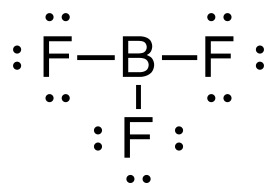
Molecular geometry, trigonal planar:
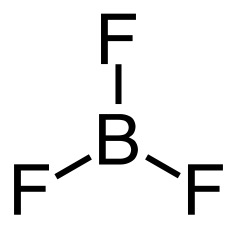
This molecule is nonpolar.
Phosphorus as X, PF3, 26 valence electrons
Lewis structure:
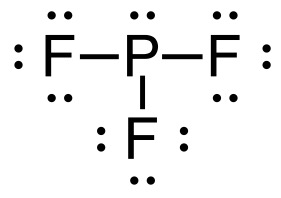
Molecular geometry, trigonal pyramid:
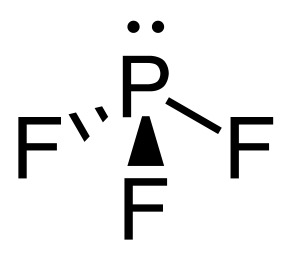
This molecule is polar.
Answer: X is phosphorus!
Show/Hide Check Your Work!
Recall that boron has a full octet with only 6 electrons; this is an exception to the octet rule.
Guided Solution
Do you want more help?
The guided solution below will give you the reasoning for each step to get your answer, with reminders and hints.
Show/Hide Guided Solution
| Guided Solution Ideas |
|---|
This question is a theory type problem that tests you on your ability to identify polarity within molecules by comparing 1 polar and 1 nonpolar molecule.
Show/Hide Resource
|
How does polarity occur within a molecule?
Show/Hide Think About This!
Differences in electronegativity between atoms will cause a polar bond. When looking at the shape of a molecule:
If you are using a printed copy, you can scan the QR code with your digital device to go directly to the video: Help Video: Polarity
|
How do lone pairs on the central atom impact polarity?
Show/Hide Think About This!Lone pairs on the central atom influence the molecular shape. The resulting positions of terminal atoms must be considered to see if the bond dipole moments cancel out. |
| Complete Solution |
|---|
| Boron as X, BF3
1. Count valence electrons. Show/Hide Don’t Forget!Valence electrons are the outer shell electrons.
2. Connect your atoms: Show/Hide Watch Out!The atom that can form the most bonds is the central atom and is usually the least electronegative atom.
3. Draw the Lewis Structure. Show/Hide Don’t Forget!Recall that boron has a full octet with only 6 electrons; this is an exception to the octet rule.
Doing this uses 24 electrons, which matches our count of valence electrons, so the Lewis Structure is complete.
4. Determine the molecular geometry or shape, and decide if the molecule is polar or nonpolar. Show/Hide Think About This!
Since there are 3 single bonds of the central atom and no lone pairs, the single bonds arrange themselves equidistant apart in a trigonal planar shape. The bond dipole vectors will all cancel out, and the molecule will be nonpolar.
|
| Phosphorus as X, PF3
1. Count valence electrons
2. Connect your atoms
3. Draw the Lewis Structure
The Lewis Structure is complete.
4. Determine the molecular geometry or shape, and decide if the molecule is polar or nonpolar. The lone pair and the 3 single bonds give a tetrahedral electron-pair geometry. Since 1 is a lone pair, the molecular geometry or shape of the resulting molecule will be a trigonal pyramid. With this molecular geometry, the bond dipole vectors cannot cancel out and the molecule will be polar.
|
| Since the molecule XF3 has a dipole moment, the molecule must be PF3.
Answer: X is phosphorus! |
Check Your Work
Summary of what we would expect based on the related chemistry theory
Show/Hide Watch Out!
BF3 is a trigonal planar molecule with no lone pairs and identical terminal atoms, so it will be nonpolar. PF3 has 1 lone pair on the central atom, a tetrahedral electron pair geometry, and a trigonal pyramid shape, so it will be polar.
If there are no lone pairs on the central atom and the terminal atoms are identical, the molecule will be nonpolar since the bond vectors cancel out.
If there is a lone pair on the central atom and the bond vectors cannot cancel out, the molecule will be polar.
Does your answer make chemical sense?
Show/Hide Answer
For a molecule to be nonpolar, the net dipole moment must be 0, meaning the bond dipole moments cancel each other out when the molecular shape is considered.
In the case where atom “X” is boron, there are no lone pairs on the central atom and the 3 bond dipole moments are equal in magnitude and in opposing directions when molecular shape is considered. The bond vectors cancel out, and the molecule is nonpolar.
Due to phosphorus having a lone pair on the central atom, even though the bond dipole moments are equal, they do not cancel each other out. This means the entire molecule has a dipole-moment and is polar.
Provide feedback by taking the survey here: link to survey
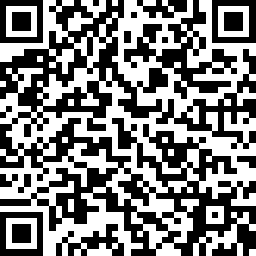
PASS Attribution
- LibreTexts PASS Chemistry Book 1500 (4).
- Question 5.E.17 from LibreTexts PASS Chemistry Book 1500 (5) is used under a CC BY-NC 4.0 license.
- Question 5.E.17 is question 91 from LibreTexts Chemistry – Atoms First 2e (OpenStax) (6), which is used under a CC BY 4.0 license.
- Question 91 is question 101 from OpenStax Chemistry (7), which is used under a CC BY 4.0 license. Access for free at https://openstax.org/books/chemistry/pages/1-introduction
Media Attribution
All figures are by Ashlynn Jensen, from LibreTexts PASS Chemistry Book CHEM 1500 (4) by Blackstock et al., and are used/updated under a CC BY-NC 4.0 license.
References
1. OpenStax. 5.1: Molecular Structure and Polarity. In CHEM 1500: Chemical Bonding and Organic Chemistry; LibreTexts, 2022. https://chem.libretexts.org/Courses/Thompson_Rivers_University/CHEM_1500%3A_Chemical_Bonding_and_Organic_Chemistry/05%3A_Chemical_Bonding_II-_Molecular_Geometry_and_Hybridization_of_Atomic_Orbitals/5.01%3A_Molecular_Structure_and_Polarity.
2. OpenStax. 4.4: Lewis Symbols and Structures. In CHEM 1500: Chemical Bonding and Organic Chemistry; LibreTexts, 2022. https://chem.libretexts.org/Courses/Thompson_Rivers_University/CHEM_1500%3A_Chemical_Bonding_and_Organic_Chemistry/04%3A_Chemical_Bonding_I-_Basic_Concepts/4.04%3A_Lewis_Symbols_and_Structures.
3. TRUChemOnline. Help Video: Polarity. YouTube, June 8, 2022. https://youtu.be/KSEkba0O43M?si=MHhiVWgNFohRF9u_ (accessed July 14, 2025).
4. Blackstock, L.; Brewer, S.; Jensen, A. PASS Chemistry Book CHEM 1500; LibreTexts, 2023. https://chem.libretexts.org/Courses/Thompson_Rivers_University/PASS_Chemistry_Book_CHEM_1500.
5. Blackstock, L.; Brewer, S.; Jensen, A. 5.2: Question 5.E.17 PASS – Which Central Atom Makes a Polar Molecule? In PASS Chemistry Book CHEM 1500; LibreTexts, 2023. https://chem.libretexts.org/Courses/Thompson_Rivers_University/PASS_Chemistry_Book_CHEM_1500/05%3A_Chemical_Bonding_II_-_Molecular_Geometry_and_Hybridization_of_Atomic_Orbitals/5.02%3A_Question_5.E.17_PASS_-_which_central_atom_makes_a_polar_molecule.
6. OpenStax. 4.11: Exercises. In Chemistry – Atoms First 2e (OpenStax); LibreTexts, 2023. https://chem.libretexts.org/Bookshelves/General_Chemistry/Chemistry_-_Atoms_First_2e_(OpenStax)/04%3A_Chemical_Bonding_and_Molecular_Geometry/4.11%3A_Exercises.
7. Flowers, P.; Robinson, W. R.; Langley, R.; Theopold, K. 7.1 Ionic Bonding. In Chemistry; OpenStax, 2015. https://openstax.org/books/chemistry/pages/7-exercises.

